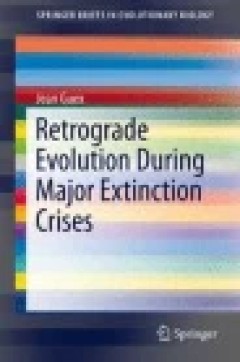Filter by

Astrobiological Neurosystems: Rise and Fall of Intelligent Life Forms in the …
This book explains why scientists believe that life may be more common in the Universe than previously considered possible. It presents the tools and strategies astronomers and astrobiologists are using in their formal search for habitable exoplanets as well as more advanced forms of life in other parts of our galaxy. The author then summarizes what is currently known about how and where organi…
- Edition
- Ed. 1
- ISBN/ISSN
- 978-3-319-10419-5
- Collation
- IX, 204
- Series Title
- Astronomers' Universe
- Call Number
- 611 CRA a

Helicobacter pylori Research: From Bench to Bedside
This book provides the current updated knowledge on all essential aspects in the rapidly evolving area of Helicobacter pylori research. H. pylori is a class I carcinogen and one of the most common infections in the world. While most people colonized by H. pylori will remain asymptomatic, up to 20 % of them may develop serious gastroduodenal disease such as peptic ulcers or gastric cancer. H. py…
- Edition
- 1
- ISBN/ISSN
- 978-4-431-55934-4
- Collation
- XI, 613
- Series Title
- -
- Call Number
- 576 HEL

Conceptual change in biology : scientific and philosophical perspectives on e…
This volume explores questions about conceptual change from both scientific and philosophical viewpoints by analyzing the recent history of evolutionary developmental biology. It features revised papers that originated from the workshop "Conceptual Change in Biological Science: Evolutionary Developmental Biology, 1981-2011" held at the Max Planck Institute for the History of Science in Berlin i…
- Edition
- -
- ISBN/ISSN
- 9789401794121
- Collation
- xvii, 490 pages
- Series Title
- -
- Call Number
- 155.7

Artemisinin and Nitric Oxide: Mechanisms and Implications in Disease and Health
This book discusses both the beneficial and harmful aspects of NO in biology and medicine, and also introduces the emerging discovery of artemisinin in antitumor, antibacterial infection, anti-inflammation, and antiaging contexts. In 1992 nitric oxide (NO) was voted “Molecule of the Year” by Science magazine, and the discovery of its physiological roles has led to Nobel Prize-winning work i…
- Edition
- Ed. 1
- ISBN/ISSN
- 978-3-662-47688-8
- Collation
- XV, 126
- Series Title
- SpringerBriefs in Molecular Science
- Call Number
- 615.19 ZEN a

Handbook of Arbuscular Mycorrhizal Fungi
Arbuscular mycorrhizal fungi are obligate root symbionts that impact plant growth, productivity and competitiveness. The book integrates key information about AMF concepts, structures and functions, and the new classification of Glomeromycota, including topics about AMF history and evolution, AMF families, genus and species description, as well as a compilation about several protocols to assess…
- Edition
- -
- ISBN/ISSN
- 978-3-319-24848-6
- Collation
- XIII, 153
- Series Title
- -
- Call Number
- 576 TAN h

Retrograde Evolution During Major Extinction Crises
This book is the first of its kind, providing in-depth analysis of the retrograde evolution occurring during major extinction periods. The text offers a non-strictly adaptative explanation of repetition of phyla after the major extinctions, utilizing a study of seven phylogenetically distinct groups. This opens a new experimental field in evolutionary biology with the possibility of reconstruct…
- Edition
- Ed. 1
- ISBN/ISSN
- 978-3-319-27916-9
- Collation
- -
- Series Title
- -
- Call Number
- -

Reticulate Evolution
Written for non-experts, this volume introduces the mechanisms that underlie reticulate evolution. Chapters are either accompanied with glossaries that explain new terminology or timelines that position pioneering scholars and their major discoveries in their historical contexts. The contributing authors outline the history and original context of discovery of symbiosis, symbiogenesis, lateral …
- Edition
- Ed. 1
- ISBN/ISSN
- 978-3-319-16345-1
- Collation
- -
- Series Title
- -
- Call Number
- -

Responses of Fruit Trees to Global Climate Change
Global climate change is expected to produce increased carbon dioxide levels in the atmosphere, higher temperatures, aberrant precipitation patterns and a host of other climatic changes that would affect all life on this planet. This review article addresses the impact of climate change on fruit trees and the response of the trees to a changing environment. The response of fruit trees to inc…
- Edition
- Ed. 1
- ISBN/ISSN
- 978-3-319-14200-5
- Collation
- -
- Series Title
- -
- Call Number
- -

Research in Computational Molecular Biology
This book constitutes the refereed proceedings of the 19th Annual International Conference on Research in Computational Molecular Biology, RECOMB 2015, held in Warsaw, Poland, in April 2015. The 36 extended abstracts were carefully reviewed and selected from 170 submissions. They report on original research in all areas of computational molecular biology and bioinformatics.
- Edition
- Ed. 1
- ISBN/ISSN
- 978-3-319-16706-0
- Collation
- -
- Series Title
- -
- Call Number
- -

Regulatory Foundations for the Food Protection Professional
Regulatory Foundations for the Food Protection Professional is a comprehensive guide for the entry-level food protection professional (FPP) working in either the public or private sector. The book can also serve as a foundation for students in academic programs preparing for a career in food protection. Additionally, as the Food Safety Modernization Act (FSMA) is implemented, this book will pro…
- Edition
- -
- ISBN/ISSN
- -
- Collation
- -
- Series Title
- -
- Call Number
- -
 Computer Science, Information & General Works
Computer Science, Information & General Works  Philosophy & Psychology
Philosophy & Psychology  Religion
Religion  Social Sciences
Social Sciences  Language
Language  Pure Science
Pure Science  Applied Sciences
Applied Sciences  Art & Recreation
Art & Recreation  Literature
Literature  History & Geography
History & Geography